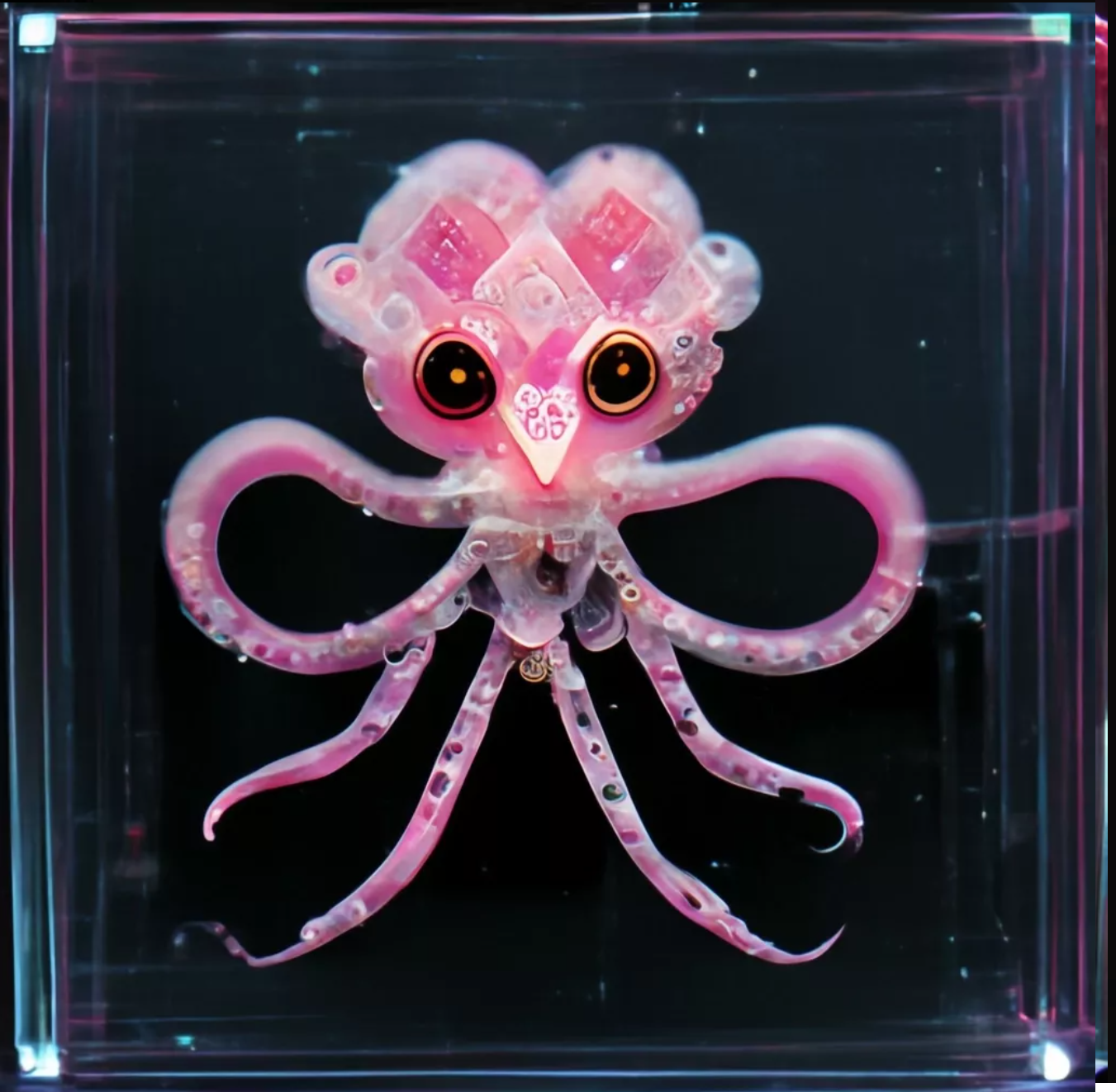Many people in the psychedelic movement are passionate about ethical development of companies. As the business landscape in this field explodes, the following resources are intended to give the reader solid alternatives to traditional venture capital and strictly for-profit or non-profit business models. In some cases, these models outperform traditional companies in competitiveness on the market, and they de-risk investment. The following is not investment advice, however it provides the reader with examples of the diverse business entity types available today.
The phrase “regenerative business” broadly refers to ways of working and designing companies that create the conditions for more life, more diversity, and more anti-fragility. While more commonly known business approaches such as B Corporations and the notion of “triple bottom line” exist, the following structures create an even more stable foundation of shared ownership and social equity. For many, tripping comes with a deepened social conscience and connection with nature. These models provide pathways to integrate these value sets into the way we do business.
Multi-stakeholder Cooperative
In a multi-stakeholder cooperative, patients, clinicians, suppliers and investors have ownership stake in a company. This ensures that the business stays accountable to the needs and concerns of groups who are affected by the company’s decisions. It diversifies who shares in the profits of a company. Lastly, it creates long-term equitable economies.
Examples and Resources
- Solidarity as a Business Model: A Multi-Stakeholder Cooperatives Manual, by Margaret Lund.
- Definition from the Urban Sustainability Directors Network’s Sustainable Consumption Toolkit
- Definition from the Urban Sustainability Directors Network’s Sustainable Consumption Toolkit
- Definition from Grassroots Economic Organizing
- Sustainable Economies Law Center
Worker-Owned Cooperative
In a worker-owned cooperative, the people running the business own it. Cooperatives are over twice as likely to survive the first five years compared to traditional companies, and they are resistant to economic recessions and downturns. Typically this type of business can accept investment money, however investors are not given voting privileges. There is a one-person, one-vote principle. One of the seven cooperative principles is “Concern for Community,” which stipulates that cooperatives work for the sustainable development of their communities through policies supported by the membership.
Examples and Resources
- Cooperation Jackson
- New Economy Coalition
- 7 Cooperative Principles
- U.S. Federation of Worker Cooperatives
- International Cooperative Alliance
- Mondragon is a federated cooperative based in the Basque region of Spain
- Everything for Everyone by Nathan Schneider
Purpose Company
Purpose Companies provide a legal pathway to keep a company purpose-driven in perpetuity. This avoids the high likelihood of being “sold for parts” as soon as investors can cash out of it. This is a common founder woe with Silicon Valley-style venture capital. Steward ownership is a related concept, where profits serve a purpose.
- Purpose Ventures is an investment community focused on this type of business. Their homepage hosts a free-to-download book called Steward Ownership: Rethinking Ownership in the 21st Century, available at https://purpose-economy.org/en/.
- Alternative Ownership Advisors hosts a listing of related models:
- Earth Equity is innovating a usage of Purpose Trust where a natural land feature such as a river or a mountain can have personhood and hold assets, managed by the Indigenous people of that place to decide what environmental and social initiatives shall be carried out to nurture the life of that place and all who dwell in relation with it.
Capped Return Investment and Revenue Sharing
These are two of the most popular investment methods for values-driven startups or companies who are ok with forgoing VC unicorn status. In this type of investment, an investor will agree to “capped” returns, such as 1.5–2x their original investment amount. With revenue sharing, these returns are given only as the company becomes profitable. This is an appropriate type of investment for a company that may have an unusually slow path to profitability, or one that is concerned about granting too much power to investors who aren’t closely connected with the company’s operations or the communities it serves. Revenue sharing is sometimes also called royalty financing. This type of investment is being deployed frequently in local food movements and in developing world social enterprises where local community ownership, and healthy local economies, are the priority.
Examples and Resources
- “Q&A with Slow Money Investor, Arno Hasse”: https://medium.com/@SlowMoneyNYC/q-a-with-slow-money-investor-arno-hesse-ae8ad8d7b2e4
- Hacking Capitalism with Capped Returns by Joshua Vial of Enspiral: https://joshuavial.com/capped-returns/.
Platform Cooperative
A platform cooperative is a digitally based company owned by contributors. Platform cooperatives can be owned by workers, users, or both. Rather than giants like Uber or Airbnb where profits go mostly to executives and shareholders, platform cooperatives benefit workers and the communities who use the services. This type of business is good for psychedelic health data aggregation, services such as a directory to find a trip sitter, delivery services, and more.
Examples
- Savvy — patient-owned health data site
- Stocksy — artist-owned stock photography site
- Fairbnb — accommodations platform that promotes and funds local initiatives and projects with 50% of the platform fees
Education and incubators
- Platform Cooperativism Consortium
- Start.coop
- Ours to Hack and Own edited by Trebor Scholtz and Nathan Schneider
Microenterprise
With fewer than 9 employees, microenterprises can be good solutions for businesses such as medicine production, packaging, fungi-based soil amendments for cannabis, and more. They increase the number of good quality jobs, and they support distributed local manufacturing which can be good for the environment and local economies. Employees have the ability to create satisfying working environments. And lastly, microenterprises’ startup needs can often be met by peer-to-peer investing, since start-up capital needs are relatively low.
Examples and resources
- Cottage Food businesses. Some edible products may be eligible to start cottage food enterprises, depending on state law
- Investopedia’s definition of microenterprises and microfinance
- Investibule, a fundraising platform for local and microenterprises
- Fibershed textile producers are often microenterprises
- Luna Vez farm and flower share, gardening across urban lots
- MakerNet — 3D printing communities often work as microenterprises
Hybrid Entities
In a hybrid entity, businesses have multiple arms that interact to build profit and accomplish missions. A corporation might have a for-profit arm, a set of impact businesses, and a philanthropic arm or DAF (donor-advised fund) to contribute to non-profit generating activities. Hybrid entities offer benefits such as: 1) Build and cycle capital according to your ethical compass. 2) Fund nonprofit initiatives efficiently without having to continually apply for grants. 3) Have clear legal pathways to diversify the purpose of your investments.
It’s important to set clear agreements and wise governance models with hybrid entities, because they can be used as tax shelters in ways that hoard capital and minimally accomplish social benefit.
Examples and resources
- ICV Group is an example of a hybrid entity ecosystem, with impact investment portfolios in different verticals, that each direct a percentage of profits into a philanthropic fund that allocates finances to projects that create systemic and sustainable change
- Donor-advised funds allow donations to accrue interest in a pool, to be allocated to recommended grants over time.
- S.P.O.R.E., Society for Psychedelic Outreach, Research, and Education is a hybrid entity, where S.P.O.R.E. is a nonprofit, with a for-profit subsidiary company.
- LIFT Economy
Pooled Funds
Multiple companies can contribute to a pooled fund to achieve shared goals. The fund itself can simply be an existing foundation, or it can be collectively managed through agreements. Types of things that pooled funds in the psychedelic industry might support include Indigenous leadership and sovereignty and BIPOC access to therapy. The emerging digital entity called a DAO, or decentralized autonomous organization, can be used to allocate capital to distributed initiatives, through sophisticated automation techniques such as drip feeds that go to specific working groups for research, or even a marketing team that services all the member organizations of the DAO.
Examples and resources
- Femtheogen is a democratic philanthropy collective that uses a participatory 9-month long cohort process for female leaders in the psychedelic movement to allocate funds toward projects and individuals that uphold feminine principles, and are at least 50% women-led.
- ARMI’s BioFabUSA is an example of a consoritum where multiple types of business entities come together for a common goal. In this case, to research and manufacture engineered tissues.
- Investment fund on Wikipedia
Community-Led Investing
Involve your community in the decisions about what companies or services get funding, by allowing them to vote and deliberate. This has an advantage of starting a business off with a ready-made customer base, since it’s already known that there is demand for the product or service. It also supports longevity, because of the incentive to keep value circulating within a community rather than being extracted out of it.
Examples and resources
Addendum: Dynamic Facilitation, an approach for conflict resolution in psychedelic
communities and professional associations.
In contexts where there are opposing factions on an issue, or long-standing cultural conflicts, dynamic facilitation is an excellent methodology to help the sides come to a shared understanding of what steps can be taken to advance both parties’ goals. The facilitator walks each side through describing why they believe what they do about the issue. From that place of deeply listening to each other, it is often more possible to find common ground and shared values. Dynamic Facilitators are trained in everything from transpersonal psychology to intergenerational trauma, to mediator techniques.
Resources and Practitioners
- From Conflict to Creative Collaboration: A User’s Guide to Dynamic Facilitation, by Rosa Zubizarreta
- Rosa Zubizarreta
- Sofia Bustamante
- Simone Torrey: Simone is not specifically a dynamic facilitation practitioner, but she has worked with psychedelic communities and specializes in gender-related conflicts in corporations and communities. She is also experienced with anti-racism work.


